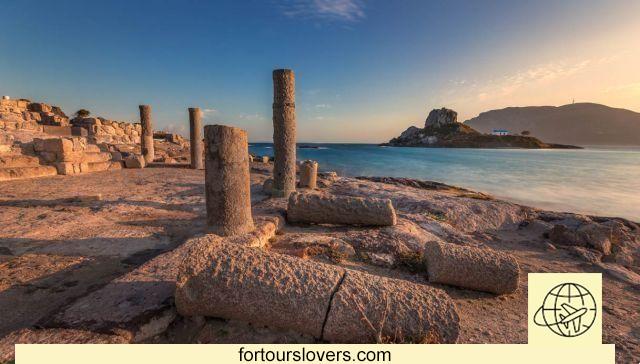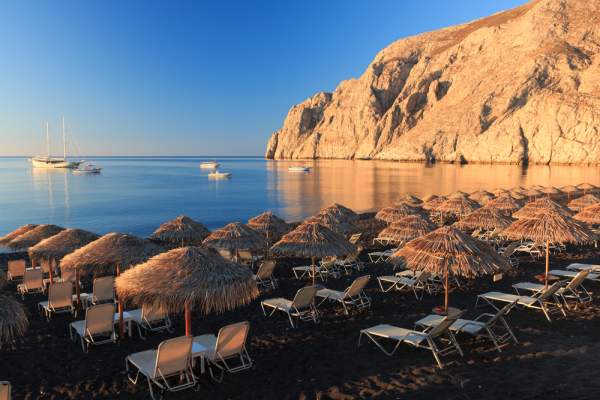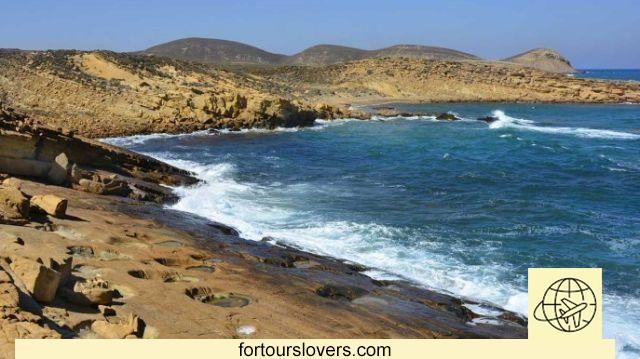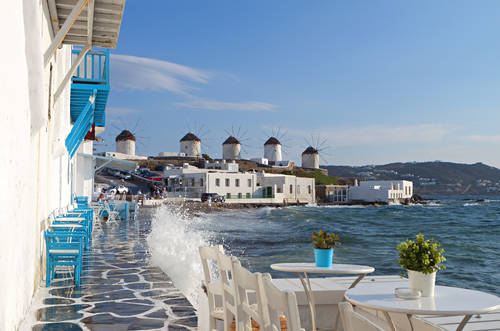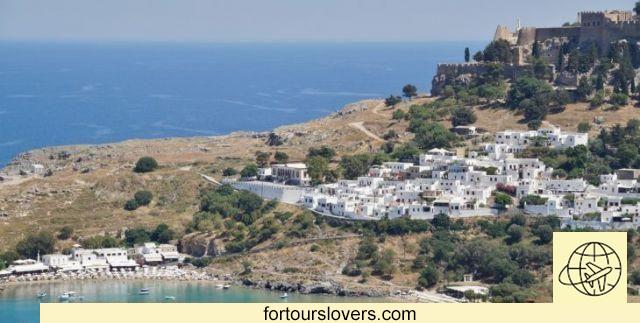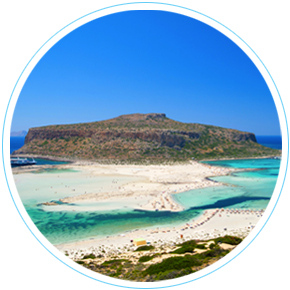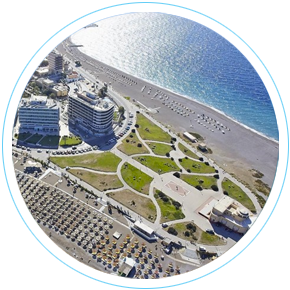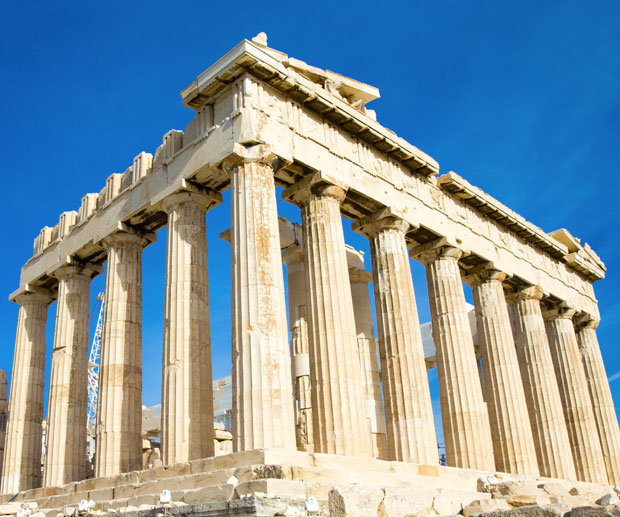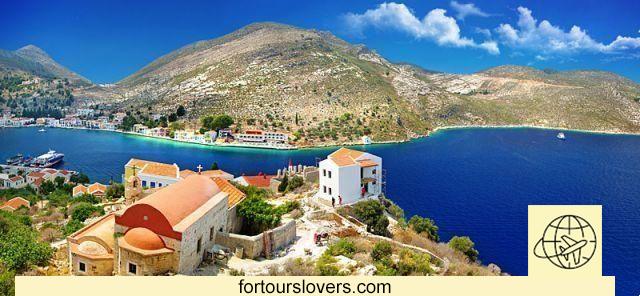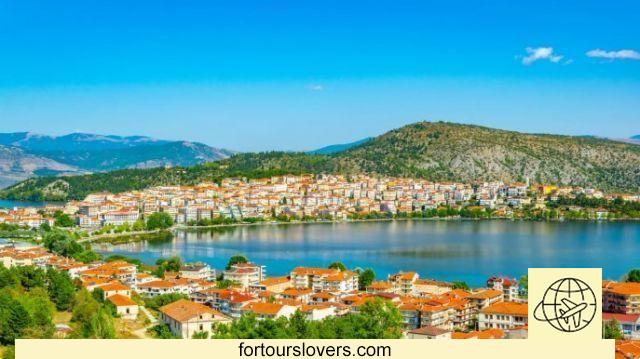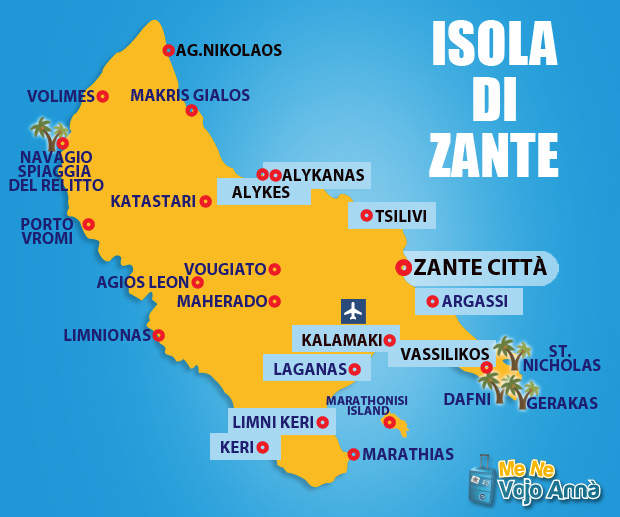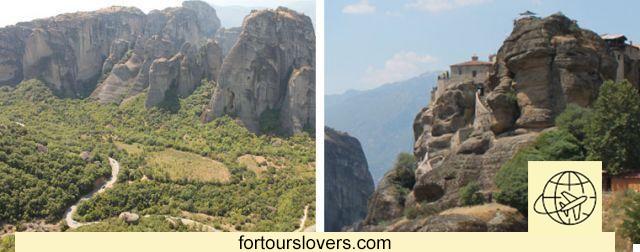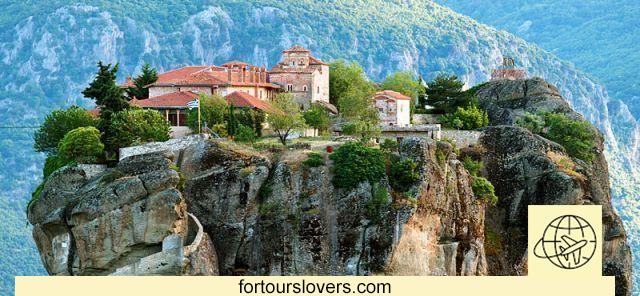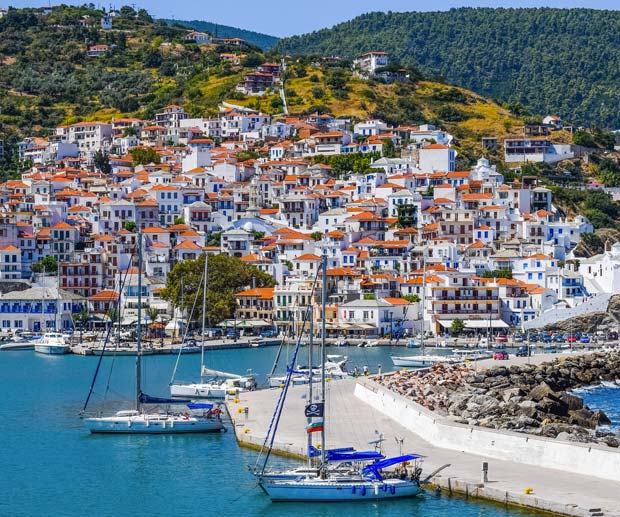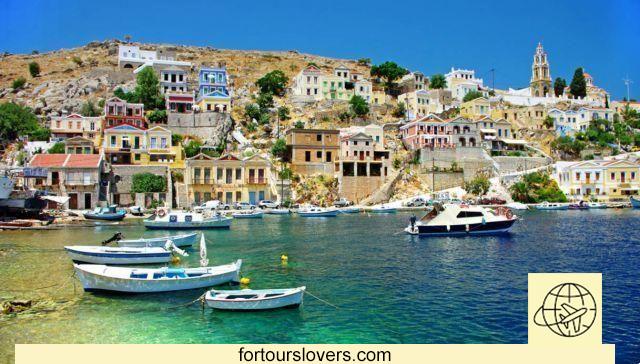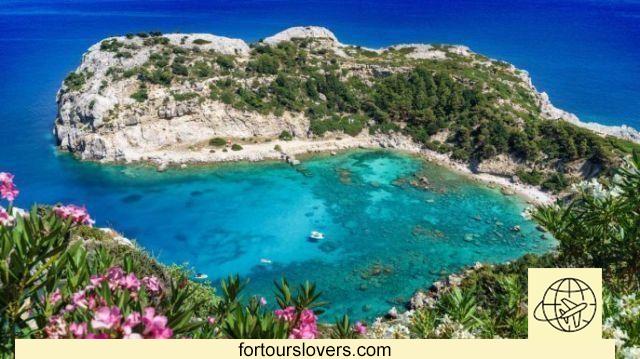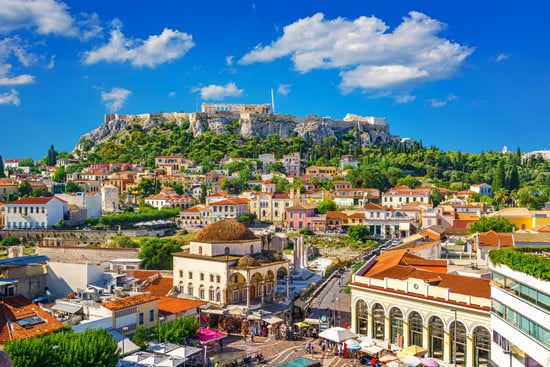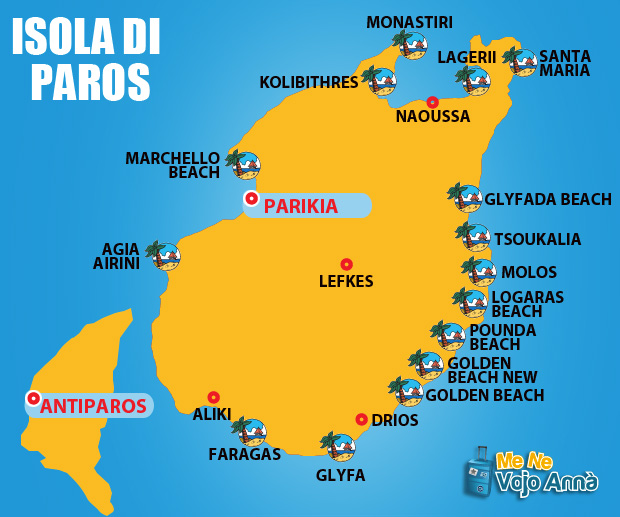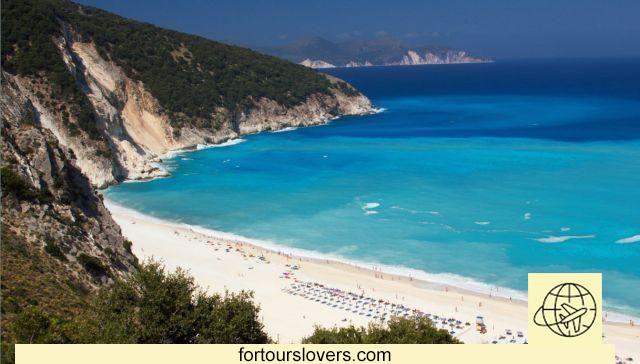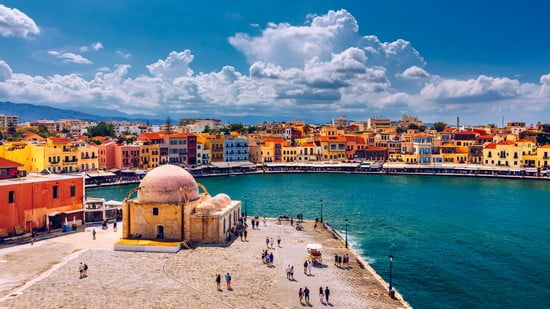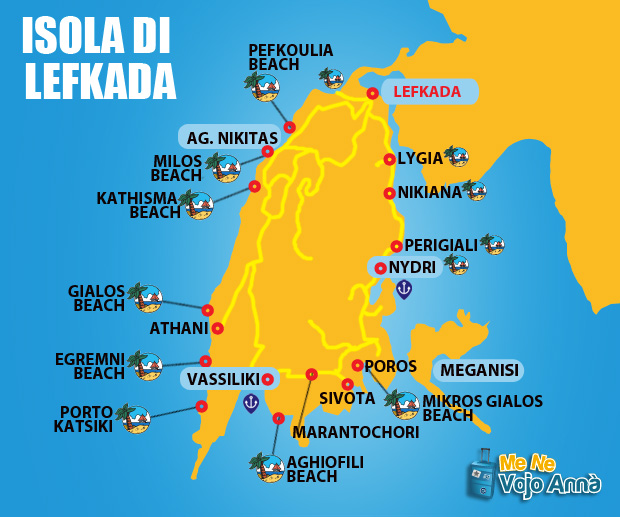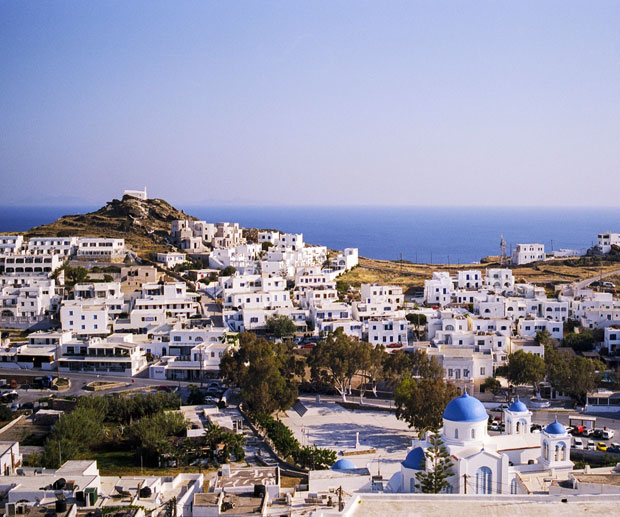Best things to see and do and how many days to see Crete
Crete is the largest island in Greece and the fifth largest in the Mediterranean, it is full of history and is the ideal destination for a dream vacation.
It is not easy tomake a list of what to do in Crete: beaches with crystal clear sea, archaeological sites and museums are just some of the attractions that this beautiful island has to offer.
The best option would be to divide the trip in several stages, dedicating a part of the vacation to explore an area and then move on to the other side and not miss the main attractions.
Amongthings to see in Crete there are certainly its beautiful beaches. The most popular are on the west coast, such as the famous:Balos, ElafonissieFalasarna.
Also on the western side, the beautiful cities ofChania (Chania) andRethymno.
But for history lovers, the most interesting places to visit in Crete are the archaeological sites ofour andFestos and the Archaeological Museum of Heraklion.
When you think aboutwhat to visit in CreteHowever, several factors must be taken into account, in particular it is important to evaluate the days of stay, the airport of arrival and the period in which you choose to come to the island. While the beaches attract many tourists during the summer, autumn is perfect for visiting museums and archaeological sites.
Among the many things to do in Crete, for nature lovers, there is no shortage of trekking trails through forests and mountains.
Despite the plethora of attractions, we still try to make a list of things to do and see in Crete, to have a first approach to the island and start thinking about your travel itinerary.
Four provinces; twenty-four municipalities; more than eight thousand kilometers of extension (one thousand kilometers of coastline) and more than six hundred thousand inhabitants. It is easy to say island. Crete is looking at it from the sea. However, once on the ground, you will immediately know what it is: one places that really lack nothing. Sea, beaches, art, history, culture, mountains, agriculture and of course tourism. A lot of tourism, mostly concentrated in the district of Heraklion (or Iraklio), capital of the island and fifth Greek city by number of inhabitants (about 160,000) after Athens, Thessaloniki, Piraeus and Patras. Faced with such impressive figures (Crete, after Sicily, Sardinia, Corsica and Cyprus is the fifth island of the Mediterranean) and the millenary history of the area, suggest a list of things to do and see is necessarily a partial operation, useful for a first approach to the island. Inevitably, in contact with very different places, situations and environments, the instinct prevails over the more or less rigid stairs to follow. Much counts period of the year where you choose to come. Depending on seasons, in fact, the priority. If in summer the sea is king (on the cover the beach of Preveli about 30 km south of Rethymno), in spring and autumn, hiking is certainly an excellent alternative. Similarly, in the winter you can dedicate yourself to the knowledge of museums around the island. Here are our suggestions for a vacation in beautiful Crete. Happy reading.
How many days are necessary for a trip to Crete, 7, 10 or 15 days?
As I have already mentioned, Crete is very large and 7 days may not be enough to visit it in its entirety. With only one week, I advise you to choose between east and west and organize your itinerary according to the area. My advice is to dedicate at least 10 days to the trip. 15 days would be perfect and would allow you to go from cities to beaches, from inland villages to archaeological sites and nature excursions for which you would otherwise not have much time.
Climate: when to go to Crete
Crete has a Mediterranean climate. Its summers are hot and sunny and, obviously, the hottest months (June, July and August) are the busiest and most expensive. Summer temperatures can reach an average of 29°. In the cooler months (December to March) temperatures can drop as low as 8°.
When to go to Crete?
My advice is to choose early or late summer. May-June and September are, in my opinion, the best months. Temperatures are also good for swimming in the sea, the beaches are uncrowded and the cities are quieter. In addition, prices are certainly lower than during the more touristy months. Also, keep in mind that Crete has very good temperatures from April to October. I was there in mid-September. Temperatures were still high, there were not too many tourists and prices were very affordable, from car rental to accommodation.
What to do and see in Crete?
1.- What to see in Heraklion
Heraklion, Herakleion, Iraklion and Heraklion. These are the names of thecapital of Crete, by far themost important town of the island both from the historical-cultural and tourist-commercial point of view. A city where theVenetian and Turkish traces, the two dominations that most influenced the urban and architectural development of the territory. Among other things, the topos "Candia", which derives from the Arabic al-khandaq (transl. "The moat"), comes back in an extraordinarily similar way also in the Venetian dialect, although with reference to the white stone ("candida") widely used in civil construction. As for things to see, you have many choices. We highlight among the many: theArchaeological Museum(see next paragraph) and theHistorical Museum,Eleftherias Square,via Korai,via Daidalou, theCathedral, themura andMorosini Fountain. In short, there are so many ideas that Heraklion offers to the visitor that it would be necessary to write them separately from the rest of Crete. No wonder that, very often, it is here that the tourist who wants to discover thelargest islandof all Greece.
3- What to see in the Castello del Molo (Koules)
A castle rich in history that dominates the port and the city of Heraklion and reminiscent of the Venetian domination. Visit also recommended for the miserable expense, entrance fee of 2 €.
3.- Archaeological Museum of Heraklion - What to see
Fifteen thousand exhibits(frescoes, statuettes and ceramics) distributed onsale 22 for a period of aboutfive thousand years(from the Neolithic to the Greco-Roman). These are the numbers of the Archaeological Museum of Heraklion, one of the most important in all of Greece. Undoubtedly the most important in the world as far as theMinoan Civilization is concerned, in operation from approximately 1700 to 1450 B.C.Not only archaeology. The two-story building that houses the museum is one of the most significant testimonies ofEuropean functionalist and rationalist architecture (mentioned by the prestigious Bauhaus Foundation). Designed by architectPatroklos Karantinos, it was built between 1937 and 1940 on the ruins of a Catholic monastery that was destroyed after the earthquake that struck Crete in 1856.Formore information(history; descriptions; photos and summer-winter opening hours) visit the English version of theofficial website of the museum: Archaeological Museum of Heraklion.
Palaces / Archaeological Sites - Palace of Knossos - What to see
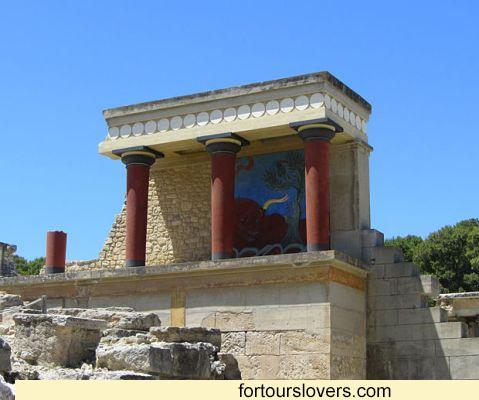
Those who come on vacation to Crete can not avoid visiting thePalace of Knossos. It isone of the most important archaeological sites in the world, at the center of some of the most famous myths of ancient Greece. For example, every time we use the word"labyrinth" to describe an intricate system of alleys, we don't know it, but indirectly we are remembering the architect of the labyrinth commissioned byMinos to imprison theMinotaur. The same goes for the"Ariadne's Thread" and"Wings of Icarus": also these expressions, meanwhile raised tocommon metaphors, refer to two mythical stories set in the walls of thiscitadel 5 kilometers from Heraklion. Of the more than 1000 rooms of the royal palace, very little remains. Much has been destroyed over the centuries, while what excavations have brought to light has been severely compromised by"romantic" reconstruction carried out byEnglish archaeologistArthur Evans. The man, in fact, in the early 900s bought much of the land involved in the excavation activities, proceeding to the restructuring of what came to light without meeting any scientific criteria for the conservation of the property. On the contrary, they even ended up usingreinforced concrete. Despite the criticism, the area has been configured in a professional and modern way: the monumental complex is easily accessible both by car and public transport; the queues at the entrance run fast; The guides are essential to delve into the millennial history of an archaeological site also famous for the discovery -- among other things, by Evans himself -- of two very ancientwriting systems: theLinear A andLinear B. The tip is to visit the Palace of Knossos in combination with the Archaeological Museum, taking advantage of the possibility of using asingle ticket (16.00 € uro) for the 2 entrances.
5.- Rethymno - What to see
Once in Rethymno, the first thing to do is to see theRimondi Fountain inPlatanou Square. At least this is the opinion of many, according to which the monument in question perfectly describes the"Loci Genio" of the third largest city by area and number of inhabitants of the island of Crete (after Heraklion and Chania). There is the Corinthian colonnade, there are Venetian decorations and there is the typically Turkish vaulted ceiling. In conclusionAncient Greece,Venetian Republic andOttoman Empire, the three"Chapters" of the history of Crete. Of course, the traces of the dominations that have affected the territory are many more: from thefortress on the hill of PaleoKastro, to theArchaeological Museum, from themosques of Valides and Nerantzes to theMonastery of Arkadi, there are many urban, architectural, devotional and archaeological signs that tell the history and culture of the locality. That said, thepresent of Rethymno is mainly touristic. Hotels, restaurants and stores are mostly concentrated around theport and theVenizelou promenade. Same speech for theEast Coast that, with more than ten kilometers of uninterrupted beach, has experienced an intensetourist development.
6.- Agios Nikolaos - What to see
Sea, pubs, discotheques, luxury hotels but also nature, excursions, agriculture and cattle raising. Theretown of San Nicola, on the east side of Crete(Province of Lassathi) is one of thebusiest tourist places of the island. Since the sixties of the last century it has known animpetuous tourist development that, however, has just scratched the interior of the territory that, instead, has maintained its ownstrong rural footprint.the ten and past kilometers ofcoast of Elounda are undoubtedly the main attraction of the area. The sea is crystalline andfree and equipped beaches are followed (Ammoudi, Akti Koundourou, Katholiko, Minos Palace, Havania, Katsikia just to name a few). Of course, there is no lack ofmuseum spaces. See the citizenarchaeological museum, as well as a visit to the childethnographic museum that houses a rich collection of traditional clothing and tools of the community is recommended. Absolutely to make also the trip to theFortress of Spinalonga. It is a fortified island at the mouth of thegulf of Mirabello, just off the coast of Agios Nikolaos.
7.- Chania - What to see
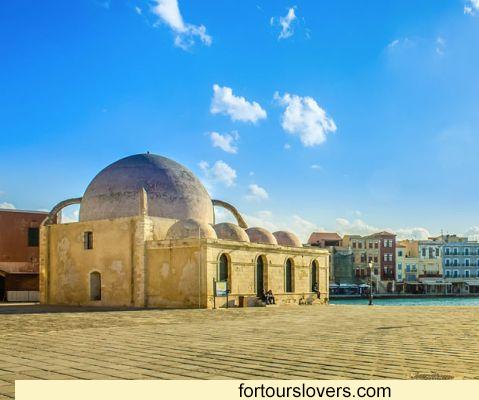
Sea and mountain; history and traditions; agriculture and tourism; old and new: in Chania, Hania, Chania nothing is missing. After Heraklion, it is the most important city of the island of Crete of which it was thecapital until 1971. Numerous traces of the formerVenetian and Turkish dominations to the point of being known in tourism as the"Venice of the East". There are many things to see. Just to name a few, without pretending to be exhaustive: theVenetian Port, thearchaeological museum, theByzantine Museum, thecathedral, theDistrict of Kastelli andmunicipal market. Chania, among other things, is excellently served byIoannis Daskalogiannis Airport (second in importance on the island) and, besides being a costlytourist resort, it is also the starting point of beautiful excursions in a time ofexcursions in a moment ofWhite Mountains(Lefka Ori, in Greek), the mountain range that dominates the central-western side of Crete with severalpeaks above 2000 meters. Absolutely not to be missed!
8.- Samaria Gorge - What to see
As mentioned above, Crete is also one of theideal destinations for hiking enthusiasts. The most famous excursion, which has become a realtourist "must", is that inSamaria Gorge within theWhite Mountains National Park. More than 10 kilometers of trail fully signposted and under the supervision of theforestry corps of the province of Chania. The path, which winds from an altitude of about 1200 meters above sea level to the Libyan sea coast, is composed mainly of stones and dirt, so the use ofsuitable shoes. The same goes for theclothing that must be trekking and, as they say in the jargon,"Onion". In fact, even in midsummer (a time when it would still be better to avoid taking a walk) the temperature range, as you get closer to the sea, is considerable. Chania, of course, is the best starting point for the excursion although, as we said, tourists now arrive from all over Crete, even from the opposite side of the island. Therefore, it is easy to findorganized excursions wherever (obviously those with a tourist vocation) you are. The park isopen approximately from the end of April to October. The entrance fee hovers arounduro 5,00 €.
9.- Archaeological site of Festos - What to see
Crete, as we know, is one of the most famous archaeological destinations in the world. Groups of scholars from all corners of the planet follow one another on the island since the nineteenth century. Even from Italy, which with theItalian Archaeological School of Athens (SAIA) is in charge of the excavations of thesite of Phaistos, on the south side of the island. It is one of the most important archaeological research fields in the Mediterranean, second in size to the monumental complex of Knossos. Again, as suggested above, it is preferable to visit the site together with the Archaeological Museum of Heraklion. If only many artifacts found at Festos are kept in this museum. Above all, the"Disk of Festos", whose front and back inscriptions are still the subject of scholarly discussion. The important find was discovered in 1908 during an excavation campaign carried out by Italian archaeologistsLuigi Pernier andFederico Halbherr. The Italian Archaeological School of Athens is one of the17 foreign archaeological institutes present on the island of Crete and depends on theMinistry of Cultural Heritage and Activities (MIBAC).
Gortyna - What to see
Among the archaeological sites one can not fail to mentionGortyna, on thesouthern slopes of Crete. It is one of the 24 municipalities of the island, has about 18,000 inhabitants and is more than 40 kilometers from the capital Heraklion. Like theexcavations of Phaistos, even those of Gortyna have been carried out since the late nineteenth century fromItalian Archaeological School of Athens(SAIA). The most famous artifact found in this city are the so-called"Laws of Gortyna" marble blocks with inscriptions in Doric language datable between the sixth and fifth centuries BC and in all probability related tofamily law. The archaeologist was the author of the important findFrederick Halbherr, protagonist of many excavation trials between the late nineteenth and early twentieth century. But that's not all because Gortyna was also importantRoman Colony, seat of the governorship of the Empire that also included the region of Cyrenaica in Libya.Not only archeology. Gortyna also deserves it from the landscape-environmental point of view. To see the smallseaside resort of Lendas from where you can go to the discovery ofwild beaches of Trahoula, Trypiti and Dysikos. Not to be missed!
11.- Gavdos - What to see
The last stop in Europe. The southernmost point of the old continent both geographically and politically (Greece is in the EU). The island of Gavdos, or Gozo to put it "Venetian style", is locatedabout 70 kilometers off the southern coast of Crete. Administratively it is part of theProvince of Chania, while the Libyan coasts, and therefore the African mainland, are 170 kilometers away. People come to Gavdos forcrystal clear sea andpristine beaches. There is no shortage of hotels and accommodation facilities, but there are many"Day Tourists" who in summer set sail from the ports ofPaleochora,Sfakion andSougia small towns on the south side of Crete. The beaches, we said, represent the main attraction of the island:Korfos(closest to the port),Lakondi,Chief tripiti(south end),potamos,Pirgos,Lavrakas, some of the most famous. The island, about 30 kilometers in area, also has abus service which allows you to reach the different parts of the territory quite easily. Apart from the sea and the possibility of some excursions, Gavdos does not offer much. Not in vain, without prejudice to the runaway tourism we have just mentioned, the island is a favorite destination foralternative travelers in search of peace and wild environments.
12.- Spinalonga - What to see
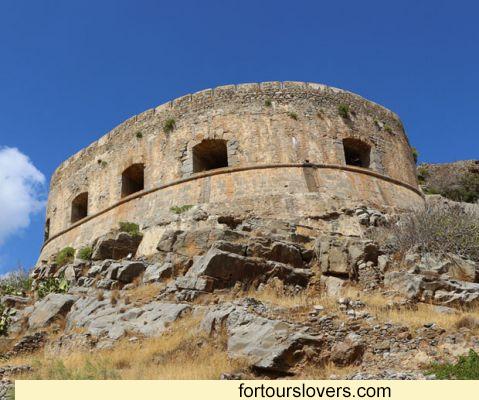
Spinalonga is an artificial island, where the Venetians built a fortress that became a leper colony after 1600. It can be reached from several ports, but the most convenient is Plaka from where you can reach the island in a few minutes.
Tip: Bring a hat and water, as the only bar on the island is very expensive.
13.- What Beaches to visit in Crete
In addition to the wonderful archaeological sites and evidence of ancient civilizations, Crete is known for the charm of its beaches, more than 300, mostly bathed by crystal clear waters.
It is impossible to say which one is the most beautiful, for sure we can say that there are some unmissable, as the notes:Balos, Elafonissi and Falassarna all located on the west side.
Another very special beach on the island of Crete isVai Beach, is located on the east coast and is the largest palm grove in Europe.
Elafonissi, with transparent sea and sand with pink reflections, is located in the southwestern part of the island. Formed by a series of spectacular coves, it is quite windy and is surrounded by some scattered houses and small taverns where you can taste the typical Cretan dishes.
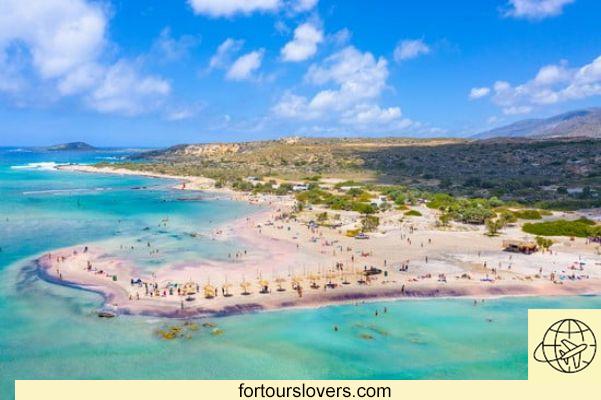
Vai Beach, also called "palm forest" because it is surrounded by a palm grove, the largest in Europe, is located on the east coast of the island of Crete. The sand is golden and the sea is transparent, a tropical atmosphere that makes it one of the most sought after beaches.
Spinalonga Island, northeast of Crete, is a small islet that houses a fortress built by the Venetians in 1497. It is the ideal destination for a walk with a historical flavor, between walls, ramparts and ancient buildings. But not before taking a dip in the blue waters surrounding the island.
Falassarna is located on the western side of the island and is considered one of the best in Greece. The sand is very white, the sea is blue and almost green. It is wild, away from the world and is ideal for surfing because it is exposed to the winds. Enjoy also the spectacular sunsets before leaving.
The east side of the island is the wildest, the most virgin and the most spectacular.Laguna en Balos is an example. Many consider it a true paradise thanks to the transparent and turquoise water, and the white and fine sand. It can be reached by boat or by land.
If you have not yet visited Crete, this summer may be the right time to discover this fascinating Greek island and enjoy all that the island has to offer.
If it takes your heart, don't worry, you'll be back next year and Crete will welcome you once again with its smiling sun, the sounds of the Cretan lyre, the scents of orange blossom and jasmine, a slice of fresh red watermelon. and a glass of ice-cold raki.
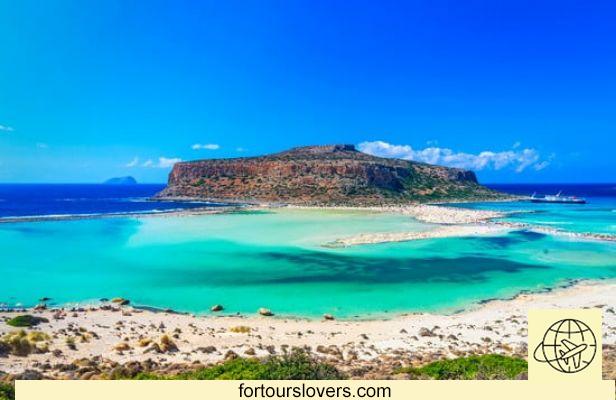
14.- Gole di Samaria - What to see
If you are looking for wild Crete, an excursion to the Samaria gorge is for you, a 16 km long canyon, among the longest in Europe,ideal for trekking lovers.
The route is very demanding, it is recommended to face it with proper hiking shoes and with a good supply of water and food.
Chania is the best place to start the excursion to the Samaria Gorge.
15.- Chrissi Island - What to see
We complete this virtual tour of the best things to do in Crete with a visit to the charming Chrissi Island, perfect for a day trip.
Chrissi Island can be reached in less than an hour by boat from Ierapetra, once you land on the island, crystal clear waters and Caribbean beaches await you.
Useful information on how to get around Crete
Getting around the island of Crete
When it comes to getting around Crete, considering that it is the largest Greek island, it is easy to imagine what the best means of transportation is: the car. Renting a car in Crete is the best way to discover the island and to move around independently. Often, places that seem close on the map require quite some time on the road. Let's say that using public transport is not really a good idea.
Where to rent a car in Crete
You can rent a car directly at the airport upon arrival, but my advice is to book in advance, especially during the most popular periods. Prices vary, but can be quite affordable, from €25 to €50 per day, depending on the category and rental company. To rent a car in Crete, you will need a driver's license, a valid ID and a credit card in the driver's name (you will be asked for it when picking up the car).
You can pick up the car at the airport of Heraklion or at the airport of Chania. On the island you will find the main rental companies like Avis, Budget, Hertz or Goldcar, but also local companies like Rental Center Crete, the one I used for my road trip.
Some tips that can be useful every time you decide to rent a car: first of all, choose an insurance that covers possible damages but, above all, take photos and videos of the scratches on the bodywork when you pick it up. Photos and videos will show the date and you will not be charged for damages you did not cause.




